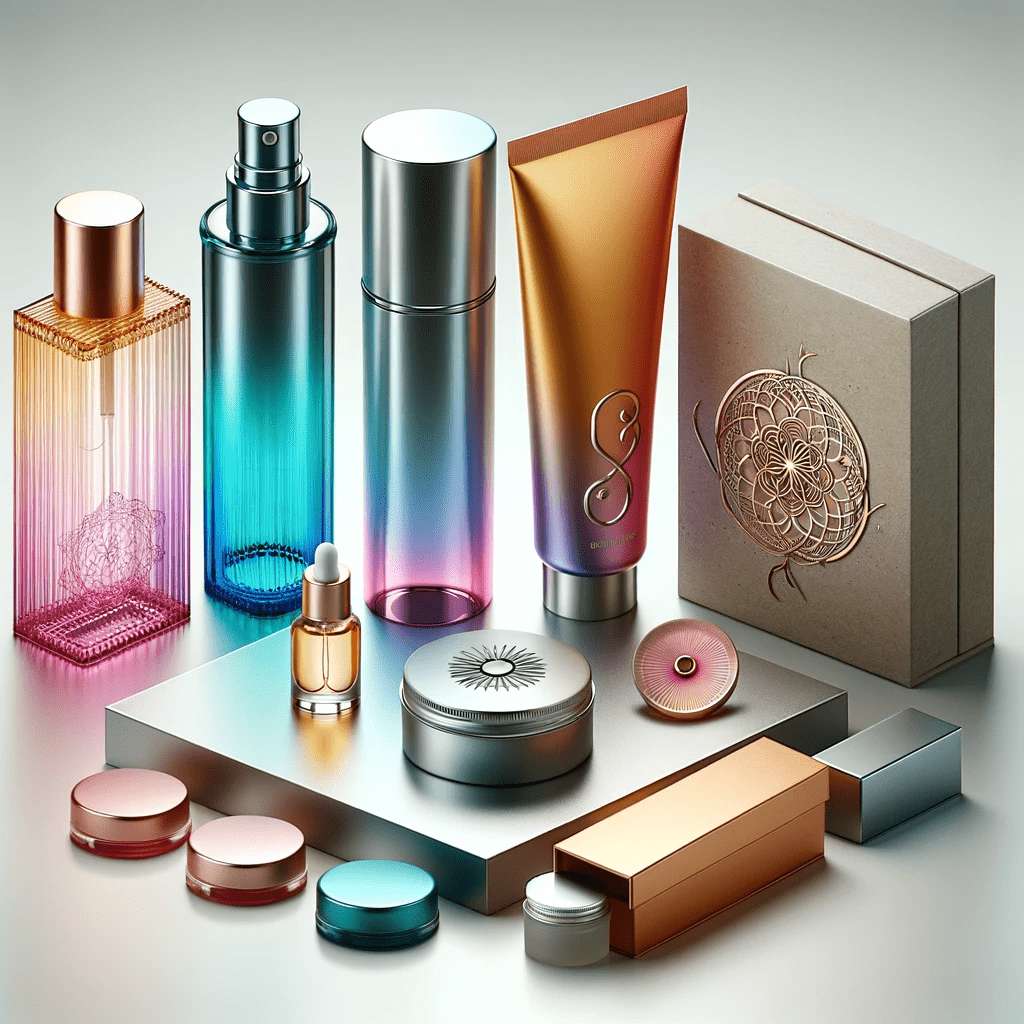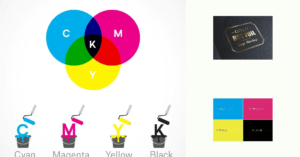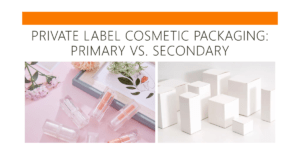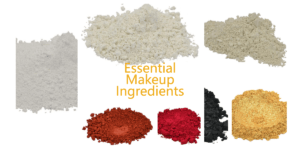In the cosmetics industry, packaging plays a crucial role in product success. It not only protects the product but also communicates the brand’s values. Innovative packaging solutions are essential for private label cosmetic brands to differentiate themselves and create a lasting impression on consumers.
Customizable cosmetic packaging allows brands to tailor their packaging to their unique brand identity and target audience. Whether it’s elegant and luxurious packaging for high-end products or minimalist and eco-friendly packaging for sustainable brands, the possibilities are endless.
Luxury cosmetic packaging is designed to evoke a sense of prestige and exclusivity. It incorporates high-quality materials, sophisticated designs, and exquisite finishes to create a luxurious experience for the customers.
Throughout this Private Label Cosmetic Packaging Guide, we will explore the importance of packaging in the cosmetics industry, the different packaging materials available, sustainable packaging solutions, design considerations, regulations, latest packaging trends, and customization options for private label cosmetic packaging.
Key Takeaways:
- Private label cosmetic packaging plays a crucial role in product success and brand communication.
- Customizable packaging allows brands to tailor their packaging to their unique brand identity.
- Luxury cosmetic packaging creates a sense of prestige and exclusivity.
- Understanding the importance of packaging in the cosmetics industry is essential for private label brands.
- Stay updated with the latest packaging trends to stay ahead in the competitive market.
Importance of Packaging in the Cosmetics Industry
When it comes to the cosmetics industry, packaging plays a crucial role in product success. It goes beyond just protecting the product; it communicates the brand’s values and captures the attention of consumers. Good packaging can make all the difference, attracting more customers and contributing to the overall success of a product.
“Packaging can be described as the silent ambassador of a brand.”
– Johan Sjöö, Director of Packaging Development at L’Oréal
The cosmetics industry is highly competitive, with numerous brands offering similar products. In such a densely populated market, effective packaging becomes a powerful tool for differentiation and establishing a unique brand identity. It helps a brand stand out from its competitors and creates a lasting impression on consumers.
Packaging serves as a visual representation of a brand’s values, personality, and positioning. It embodies the brand story and connects with consumers on an emotional level. The right packaging design not only attracts attention on store shelves but also conveys the brand’s message and resonates with the target audience.
Enhancing Product Attractiveness
Visual appeal is a key factor when it comes to attracting customers. Well-designed packaging captures attention, stimulates interest, and entices consumers to pick up and explore the product further. The use of appealing colors, eye-catching graphics, and attractive shapes can create a sense of excitement and intrigue, drawing consumers towards a particular product.
Branding elements, such as logos and taglines, play a crucial role in establishing brand recognition and familiarity. Consistent branding across packaging reinforces the overall brand identity and helps consumers associate a specific product with a particular brand.
Product Protection
Aside from aesthetics, packaging serves a practical purpose of protecting the product itself. It safeguards the contents from potential damage during transportation, handling, and storage. Effective packaging materials and design prevent issues like leakage, contamination, or spoilage, ensuring that the product reaches consumers in optimal condition.
The choice of packaging materials can vary depending on the specific product requirements and brand objectives. Glass, plastic, metal, and paper/cardboard are common materials used in cosmetics packaging. Each material offers distinct properties that cater to different product needs.
Brand Differentiation
In a crowded cosmetics industry, standing out from the competition is essential for success. Packaging provides a powerful tool for brand differentiation. By leveraging unique design elements, innovative materials, or functional features, brands can create packaging that sets them apart from their competitors.
Differentiation through packaging can involve various elements, such as shape, size, texture, or even interactive features. For example, a brand may choose to incorporate a unique opening mechanism or an innovative applicator that enhances the user experience and creates a memorable impression.
Additionally, packaging can also differentiate products within a brand’s range. Through consistent branding elements and design cues, different product variants can be easily distinguished, helping consumers navigate the product offerings.
“Packaging is not just a vessel for the product; it is also a precious tool for storytelling.”
– Mathilde Lion, Packaging Development Project Leader at Guerlain
Packaging Materials in the Cosmetics Industry
In the cosmetics industry, choosing the right packaging material is essential to protect the product and convey the brand’s image. Glass, plastic, metal, and paper/cardboard are commonly used packaging materials, each with its unique features and advantages.
Glass Packaging
Glass is a popular choice for high-end cosmetics due to its luxurious and visually appealing properties. It offers excellent product visibility, allowing customers to see the color and texture of the product. Glass packaging provides a sense of elegance and is often associated with premium brands that prioritize quality.
Plastic Packaging
Plastic packaging is versatile and widely used in the cosmetics industry. It is lightweight, durable, and offers a wide range of design possibilities. Plastic can be molded into various shapes and sizes, making it suitable for different types of cosmetic products. Additionally, plastic packaging is cost-effective and convenient for both consumers and manufacturers.
Metal Packaging
Metal packaging, such as aluminum or tin, is commonly used for high-end cosmetics. It provides a premium look and feel, conveying a sense of luxury and sophistication. Metal packaging offers excellent protection against light, air, and moisture, ensuring the product’s longevity.
Paper/Cardboard Packaging
In recent years, paper and cardboard packaging have gained popularity in the cosmetics industry, especially for personal care items. These materials are eco-friendly and can be easily recycled or biodegraded. Paper and cardboard packaging can be creatively designed and customized to reflect a brand’s values, while also reducing environmental impact.
When choosing the packaging material for cosmetics, brands must consider the product’s specific requirements, target audience, and brand image. The packaging material should align with the product’s positioning and provide a positive user experience while considering sustainability and environmental concerns.
Advantages of Different Packaging Materials
| Material | Advantages |
|---|---|
| Glass |
|
| Plastic |
|
| Metal |
|
| Paper/Cardboard |
|
Sustainable Packaging Solutions in the Cosmetics Industry
As consumers become more environmentally conscious, sustainable packaging options are gaining popularity in the cosmetics industry. Brands are embracing the use of biodegradable materials, recycled materials, minimal packaging, refillable packaging, and upcycling to reduce waste and promote sustainability.
Private Label Cosmetic Packaging-Biodegradable Materials
One of the key pillars of sustainable packaging is the use of biodegradable materials. Natural materials like bamboo and cornstarch are gaining traction in the cosmetics industry due to their ability to decompose naturally, reducing waste and minimizing environmental impact. These materials offer a more environmentally friendly alternative to traditional packaging materials.
Private Label Cosmetic Packaging-Recycled Materials
Recycled materials play a significant role in promoting a circular economy and reducing the reliance on virgin resources. Cosmetics brands are increasingly utilizing recycled plastic and paper for their packaging, ensuring that waste materials are given a new life. Recycling helps to conserve resources, reduce greenhouse gas emissions, and minimize the overall environmental footprint of packaging.
Private Label Cosmetic Packaging-Minimal Packaging
Minimal packaging is another sustainable approach gaining traction in the cosmetics industry. By reducing the amount of packaging material used, brands can minimize waste and environmental impact. Minimalist packaging not only aligns with sustainable practices but also appeals to consumers who appreciate simplicity and elegance. It showcases a commitment to environmental responsibility and can enhance brand perception.
Private Label Cosmetic Packaging-Refillable Packaging
Refillable packaging offers a practical and eco-friendly solution to reduce packaging waste. By providing consumers with the option to refill their cosmetic products, brands can significantly decrease the amount of single-use packaging that ends up in landfills. Refillable packaging also offers convenience to consumers, as they can easily replenish their favorite products without repurchasing the entire package.
Private Label Cosmetic Packaging-Upcycling
Upcycling is an innovative approach that involves repurposing waste materials into packaging, combining sustainability and visual appeal. Brands can transform materials like glass bottles, plastic containers, and paper into unique and eye-catching packaging designs. Upcycling not only helps reduce waste but also showcases creativity and environmental consciousness.
Design Considerations for Private Label Cosmetic Packaging

When it comes to cosmetics packaging, design is a critical factor that can attract customers and effectively communicate a brand’s values. Several key design considerations contribute to creating visually appealing and impactful packaging solutions.
Color: The strategic use of color in cosmetics packaging helps establish a visual identity that resonates with the target audience. Color can evoke specific emotions or convey a brand’s personality. Whether it’s vibrant and playful shades for a youthful brand or elegant and sophisticated tones for a luxury line, color selection is crucial in capturing the desired brand image and attracting customers.
Typography: Typography plays a significant role in packaging design, as it contributes to brand recognition and product differentiation. The font style, size, and alignment should reflect the brand’s personality and be legible for easy product identification. Typography can also be used creatively to emphasize key product features or communicate brand values through carefully crafted taglines or descriptions.
Shape: The shape and size of cosmetics packaging can greatly impact consumer perception. Unique and innovative packaging shapes can help products stand out on shelves and capture the attention of potential customers. Additionally, the ergonomics of the packaging should be considered to ensure functionality and ease of use for the consumers.
Branding: Branding elements such as logos, brand names, and taglines should be prominently displayed on cosmetics packaging. They help establish brand recognition and build brand loyalty among consumers. Consistent branding across all packaging designs strengthens brand identity and increases the likelihood of repeat purchases.
Functional Packaging: Functionality is a vital aspect of cosmetics packaging that enhances user experience and customer satisfaction. Packaging should be designed in a way that ensures easy product dispensing, sealing, and storage. Considerations such as convenient closures, applicators, and travel-friendly designs contribute to the overall customer satisfaction and reinforce positive brand association.
“Design plays a vital role in cosmetics packaging, capturing attention, conveying brand values, and ensuring customer satisfaction.”
By carefully considering these design elements, cosmetic brands can create packaging that not only entices customers to purchase but also effectively communicates their brand identity, boosting product sales and customer loyalty.
Regulations for Cosmetics Packaging
In the cosmetics industry, packaging is subject to various regulations to ensure the safety of consumers and minimize environmental impact. Compliance with these regulations is crucial for brands to maintain their reputation and meet legal requirements. This section provides an overview of the key regulations pertaining to cosmetics packaging.
Product Labeling Of Private Label Cosmetic Packaging
Product labeling is an essential aspect of cosmetics packaging that provides important information to consumers. It includes the identity of the product, net quantity, ingredients, directions for use, and manufacturer information. Accurate and comprehensive labeling helps consumers make informed choices and ensures transparency in the cosmetic industry.
“Accurate and comprehensive labeling helps consumers make informed choices and ensures transparency in the cosmetic industry.”
Ingredient Disclosure Of Private Label Cosmetic Packaging
Ingredient disclosure is another vital aspect of cosmetics packaging. It involves listing all the ingredients used in the product, allowing consumers to be aware of potential allergens or substances they may want to avoid. The disclosure must follow specific formatting requirements to ensure clarity and accessibility.
Packaging Symbols Of Private Label Cosmetic Packaging
Packaging symbols are graphical representations that provide important product information, including safety instructions, recycling instructions, and cautionary warnings. Some symbols are mandatory, while others are recommended. They serve to educate consumers and promote responsible consumption and disposal of cosmetic products.
“Packaging symbols are graphical representations that provide important product information, including safety instructions, recycling instructions, and cautionary warnings.”
Environmental and Safety Regulations
Environmental and safety regulations are in place to ensure that packaging materials used in cosmetics are safe for both consumers and the environment. These regulations govern the use of specific substances, set standards for packaging quality and durability, and promote responsible waste management practices.
To comply with environmental regulations, brands are encouraged to explore sustainable packaging options, such as biodegradable materials or recycled packaging.
By adhering to these regulations, cosmetics brands demonstrate their commitment to consumer safety and environmental sustainability.
Latest Packaging Trends in the Cosmetics Industry
As the cosmetics industry continues to evolve, packaging trends play a significant role in the success of products. Consumers are increasingly drawn to packaging that aligns with their values, leading to the rise of minimalist and sustainable packaging designs. In addition, bold colors are being employed to create eye-catching packaging that stands out on shelves.
Minimalist Packaging
Minimalist packaging is all about simplicity and elegance. Brands are opting for clean, streamlined designs that reduce waste and reflect the growing demand for eco-conscious products. Minimalist packaging often features sleek lines, minimal text, and a focus on the product itself. This trend appeals to consumers who appreciate a clutter-free aesthetic and value sustainability.
Sustainable Packaging
The call for sustainable packaging solutions has gained significant momentum in recent years. Brands are exploring biodegradable materials and recycled packaging options to reduce their environmental footprint. Biodegradable materials, such as bamboo and cornstarch, offer a natural alternative to traditional packaging materials. Recycled packaging utilizes materials that have been repurposed, contributing to a circular economy. Sustainable packaging not only appeals to environmentally conscious consumers but also aligns with corporate social responsibility goals.
Bold Colors
The use of bold colors in cosmetics packaging has become increasingly popular for its ability to grab attention and make products stand out on crowded shelves. Brands are embracing vibrant hues and striking color combinations to create visually appealing packaging that reflects their brand identity. The use of bold colors can evoke emotions and attract customers, making it a powerful tool for product differentiation.
“The inclusion of bold colors in our packaging has proven to be a game-changer. It helps our products stand out and captures the attention of potential customers in a highly competitive market.”
– Jane Smith, Marketing Director at Glam Beauty-
| Benefits of Packaging Trends | |||
|---|---|---|---|
| Minimalist Packaging | – Reduces waste | – Appeals to environmentally conscious consumers | – Offers a sleek and elegant design |
| Sustainable Packaging | – Reduces environmental footprint | – Aligns with corporate social responsibility | – Utilizes biodegradable and recycled materials |
| Bold Colors | – Grabs attention on crowded shelves | – Reflects brand identity | – Differentiates products from competitors |
Embracing packaging trends such as minimalist designs, sustainable materials, and bold colors can give cosmetics brands a competitive edge in the market. By staying ahead of the curve and catering to the evolving preferences of consumers, brands can create packaging that not only protects their products but also reflects their commitment to sustainability and appeals to the aesthetic tastes of their target audience.
Primary Packaging for Private Label Cosmetics
Primary packaging is a crucial component of private label cosmetics, as it directly interacts with the cosmetic product itself. The primary packaging not only protects the product but also conveys important product information to consumers. In the private label cosmetics industry, primary packaging commonly includes bottles, jars, tubes, and compacts.
Bottles are versatile and practical containers that are commonly used for a wide range of cosmetic products. They come in various shapes and sizes, allowing for easy dispensing and application of liquids, such as foundations, serums, and lotions.
Jars are popular for products that require scooping or dipping, such as face creams, body butters, and lip balms. Their wide openings make it easy for consumers to access the product and control the amount they need.
Tubes are convenient and hygienic options for products like creams, gels, and ointments. They allow for controlled dispensing and prevent excessive product exposure to air, maintaining freshness and extending shelf life.
Compacts are commonly used for pressed powders, blushes, and eyeshadows. They usually consist of a mirror, a compartment for the product, and a closure mechanism to keep the product protected and portable.
When selecting primary packaging for private label cosmetics, brands consider factors such as functionality, brand messaging, and brand positioning. The packaging should align with the brand’s aesthetic and communicate the desired image to consumers.
“The primary packaging serves as the first point of contact between the consumer and the product. It must not only effectively protect the product but also reflect the brand’s identity and values.” – Cosmetics Packaging Expert
With the right primary packaging, private label cosmetic brands can enhance the overall product experience and create a strong impression on their target audience. The design, material, and functionality of primary packaging can contribute to a brand’s success in the competitive cosmetics industry.
Key Features of Primary Packaging:
- Protects the product from contamination and external factors
- Ensures proper dispensing and application of the product
- Provides necessary product information, such as ingredients and instructions
- Reflects the brand’s image and values through its design and aesthetics
Enhancing Primary Packaging with Print Methods
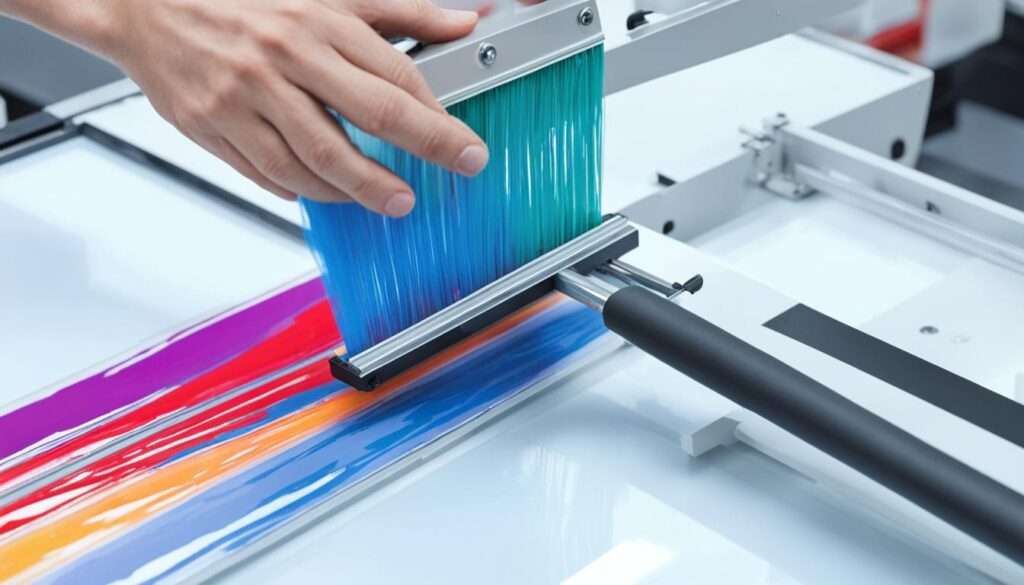
In the world of cosmetic packaging, the visual appeal of primary packaging is crucial. Print methods offer a range of options to elevate the aesthetics and customize the packaging to align with your brand’s essence. This section explores different print methods, including labeling, screen printing, and hot stamping, that can transform your primary packaging into a work of art.
Labeling: Customization and Product Information
Labeling is a versatile print method that allows you to add customization and convey essential product information on your primary packaging. Whether it’s showcasing your brand logo, product name, or ingredients, labels offer a practical and visually appealing solution. With a wide range of materials and finishes available, labels can be tailored to suit your brand’s unique aesthetic.
Screen Printing: Precise and Vibrant Designs
Screen printing is a popular print method known for its ability to create precise and vibrant designs on various surfaces. With this method, ink is pressed through a mesh screen onto the packaging material, resulting in rich and long-lasting colors. It offers excellent opacity and durability, making it an ideal choice for intricate details, sharp graphics, and bold imagery.
Hot Stamping: Adding a Touch of Luxury
Hot stamping is a print method that adds a touch of luxury to your primary packaging. It involves using heat and pressure to transfer metallic foil or pigmented film onto the packaging surface. The result is a stunning, eye-catching effect that instantly elevates the perceived value of your product. Hot stamping is particularly effective for adding metallic accents, logos, or decorative elements that create an impression of elegance and sophistication.
By incorporating print methods like labeling, screen printing, and hot stamping into your primary packaging design, you can enhance its visual appeal, create a unique brand identity, and captivate the attention of your target audience.
Secondary Packaging for Private Label Cosmetics
When it comes to private label cosmetics, secondary packaging plays a crucial role in not only providing additional protection but also offering ample branding opportunities. This packaging serves as a complement to the primary package, enhancing the overall presentation of the product. Let’s explore some popular options for secondary packaging:
Display Boxes
Display boxes are a visually appealing way to showcase private label cosmetics. These boxes can be customized with branding elements such as logos, taglines, and contact details. By utilizing attractive designs, display boxes grab the attention of potential customers and ensure that the product stands out on the shelves.
Blister Card Packaging
Blister card packaging is an ideal choice for products that benefit from a clear view. This type of packaging provides a transparent cover that allows customers to see the product before making a purchase. With blister card packaging, private label cosmetics can entice customers by showcasing the quality and appeal of the product.
White Box Packaging
White box packaging offers versatility and easy customization. These simple yet elegant boxes can be customized with various branding elements, such as logos and taglines, to showcase the unique identity of the private label cosmetics. Furthermore, white box packaging also provides a clean and sophisticated look that appeals to a wide range of customers.
“Secondary packaging not only protects the primary package, but it also creates an impactful branding experience for private label cosmetics.”
Secondary packaging is an essential component of private label cosmetics. By choosing the right packaging options such as display boxes, blister card packaging, and white box packaging, brands can enhance the overall presentation and create a lasting impression on customers.
Customization Options for Private Label Cosmetics Packaging
When it comes to private label cosmetics, customization options for packaging play a vital role in creating a unique brand identity. From printing services to surface treatment and paper box material, these options offer endless possibilities for brands to stand out in the competitive cosmetics market.
Printing Services
Printing services allow brands to add a personalized touch to their packaging, enhancing visual appeal and reinforcing brand messaging. Some popular printing services include:
- Lamination: A process that adds a protective layer to the packaging, giving it a glossy or matte finish.
- UV printing: A high-quality printing method that uses ultraviolet light to cure the ink, resulting in vibrant colors and sharp details.
- Embossing: This technique creates raised or recessed designs on the packaging, adding texture and a premium feel.
These printing services can be combined to achieve stunning packaging designs that capture the essence of a brand and captivate customers.
Surface Treatment
Surface treatment options allow brands to further customize their packaging and reflect their unique identity. Some surface treatment techniques include:
“Great packaging is like a work of art – it catches the eye, tells a story, and leaves a lasting impression.”
- Spot varnish: This technique adds a glossy or matte coating to specific areas of the packaging, creating a visual contrast and drawing attention to important elements.
- Foil stamping: By applying metallic foil to the packaging, brands can create a luxurious and elegant look that instantly grabs attention.
- Embossing and debossing: These techniques involve raising or recessing specific areas of the packaging, adding texture and depth to the design.
Surface treatment options provide brands with the opportunity to create packaging that not only showcases their products but also reflects their brand’s identity and values.
Paper Box Material
Choosing the right paper box material is essential for creating packaging that aligns with a brand’s design preferences. Different paper materials offer various textures, finishes, and levels of environmental sustainability. Here are some common options:
| Material | Features |
|---|---|
| Cardboard | Durable, versatile, and eco-friendly |
| Kraft paper | Strong, natural, and recyclable |
| Textured paper | Adds a tactile element to the packaging |
| Cotton paper | Luxurious, soft, and sustainable |
By carefully selecting the paper box material, brands can create packaging that not only enhances their products but also aligns with their sustainability goals and design aesthetics.
Customization options for private label cosmetics packaging offer brands the opportunity to create packaging that leaves a lasting impression on customers. From printing services and surface treatment to paper box material, each element can be tailored to reflect the brand’s unique identity and enhance the overall product experience.
Conclusion
Custom cosmetic packaging plays a crucial role in the cosmetics industry, enabling brands to establish their unique identity, differentiate their products, and contribute to sustainability efforts. By carefully considering packaging materials, design elements, compliance with regulations, and current trends, brands can create packaging solutions that not only protect their products but also attract and resonate with environmentally conscious consumers.
Private label cosmetics, in particular, can greatly benefit from customized and high-quality packaging. With custom cosmetic packaging, private label brands can showcase their distinct brand image, create a memorable experience for their customers, and showcase their commitment to sustainability.
Branding is a key aspect of custom cosmetic packaging, as it helps to communicate a brand’s values and connect with the target audience. Whether it’s through the use of bold colors, unique shapes, or eye-catching typography, the packaging serves as a powerful tool for product differentiation and brand recognition.
Furthermore, sustainability is an increasingly important consideration for cosmetics packaging. By opting for eco-friendly materials, such as biodegradable or recycled options, brands can reduce their environmental footprint and align with the values of conscious consumers. Sustainable packaging choices, coupled with innovative design and functionality, can ultimately contribute to the success of the product and the overall brand reputation.
FAQ
Source Links
Why is packaging important in the cosmetics industry?
Packaging is important in the cosmetics industry as it enhances product attractiveness, protects the product, and communicates the brand’s message. It helps differentiate a brand from its competitors and establishes brand identity. Good packaging can attract more customers and contribute to the success of a product.
What are the common packaging materials used in the cosmetics industry?
Common packaging materials used in the cosmetics industry include glass, plastic, metal, and paper/cardboard. Glass is popular for high-end cosmetics, plastic is versatile and widely used, metal provides a premium look, and paper/cardboard is an eco-friendly alternative.
What are some sustainable packaging solutions in the cosmetics industry?
Sustainable packaging options in the cosmetics industry include biodegradable materials like bamboo and cornstarch, recycled materials like plastic and paper, minimal packaging, refillable options, and upcycling waste materials into packaging.
What considerations should be taken into account in cosmetics packaging design?
Design considerations in cosmetics packaging include color, typography, shape, and branding elements. Functional packaging that is easy to use and transport is also important for customer satisfaction.
What regulations apply to cosmetics packaging?
Cosmetics packaging must comply with regulations regarding product labeling, ingredient disclosure, packaging symbols, and environmental and safety requirements to ensure safe and informative packaging materials.
What are the latest packaging trends in the cosmetics industry?
The latest packaging trends in the cosmetics industry include minimalist packaging, sustainable packaging options, and the use of bold colors to attract customer attention.
What is primary packaging in the cosmetics industry?
Primary packaging refers to the immediate packaging that comes into direct contact with the cosmetic product. It includes bottles, jars, tubes, and compacts, and is responsible for product protection and providing essential product information.
How can print methods enhance primary packaging in the cosmetics industry?
Print methods such as labeling, screen printing, and hot stamping can enhance the visual appeal of primary packaging in the cosmetics industry. These methods allow for customization, precise and vibrant designs, and the creation of a luxurious effect with metallic foil or pigmented film.
What is secondary packaging in the cosmetics industry?
Secondary packaging holds the primary package and provides additional protection and branding opportunities. It includes branding elements like logos and contact details, display boxes for attractive presentation, blister card packaging for a clear view of the product, and white box packaging for easy customization.
What customization options are available for private label cosmetics packaging?
Customization options for private label cosmetics packaging include printing services like lamination, UV printing, and embossing, as well as surface treatment and customization of the paper box material to reflect brand identity.
How does custom cosmetic packaging contribute to branding, product differentiation, and sustainability?
Custom cosmetic packaging plays a crucial role in branding, product differentiation, and sustainability. It helps establish a unique brand identity, sets products apart from competitors, and appeals to environmentally conscious consumers. Private label cosmetics benefit from personalized and high-quality packaging solutions.

